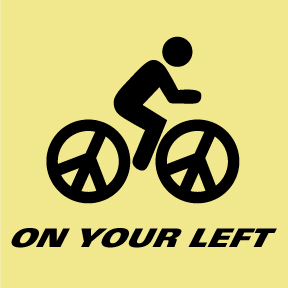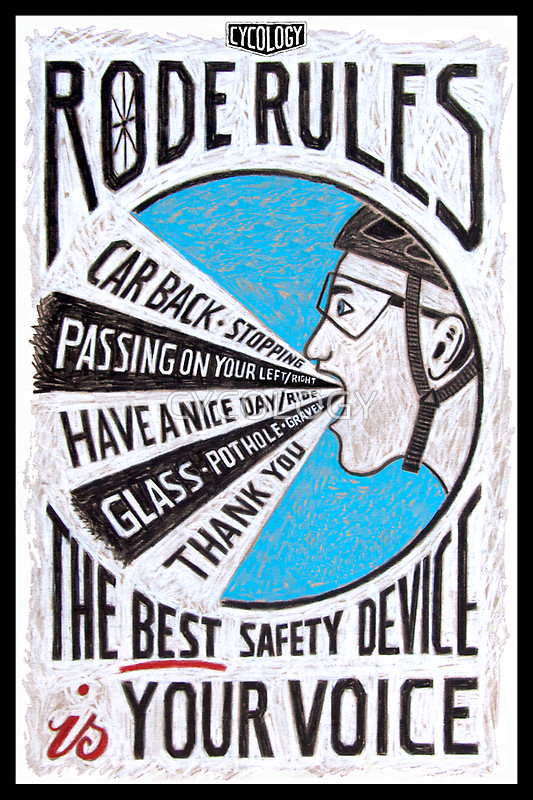If you’re not riding a “fixie” (a bicycle with no gears) then you need to know how to shift those gears and use them efficiently while riding. Whether you have 7, or 24 gears all it takes is a little practice to make it perfect.
Shifting your gears is one of the fundamental mechanical functions of your bike. Learning how to shift may seem basic, but gearing practice is something that even veteran riders can work on. Proper gearing will not only improve your speed it will also make the ride more comfortable and increase your endurance on longer rides.
The terminology can get tricky but here we will keep it uncomplicated. Note that for our use I’m not getting into the different kinds of bicycles only the basics of how to shift. If there’s something I don’t cover on your bike please leave a question in the comments.
How Many Gears Do I Have?
In simple terms, you could determine this number by multiplying the number of cogs in your rear gears by the number of front gears your bike has. For example, if your bike has 7 cogs (rings) in the rear and three front gears (rings) then you have a 21-speed bike. However, adult bikes are rarely referred to in this way in the modern bicycle industry because, basically, more doesn’t always mean better.

Rear (Cogs) Gears

Front Gears
There will always be more rear gears than front gears on your bicycle. On three-speed bikes, the gears are inside the hub of the wheel so you don’t see them.
What Hand Does What?
Left hand: Controls the front gears/front derailleur by moving the chain up and down the chainrings. These levers cause big jumps in gears for sudden changes in terrain.
Right hand: Controls the rear gears/rear derailleur by moving the chain up and down the cogs. These levers are for small adjustments to your gearing to use during slight changes in terrain.

My bike is a hybrid with 24 gears. The right side controls the rear gears (8) and the left side controls the front gears (3). It’s important to note on the right, the lever on the bottom of my handlebars is low and the one in front (under my brake lever) is high.
Depending on the type of bike you have your shifters may look a little different. On road bikes (any bike with drop handlebars), your shifters are the same levers you use to apply your brakes. To operate the shifters you push the lever sideways until you hear a click. For most mountain and hybrid style bikes with flat or curved bars, you shift the gears by using set paddles that you operate with your thumb. Some bikes operate with “grip shifters”, or a dial that is located to the inside of where you place your hands. For these systems, you change gears by rotating the dial forward and back.
No matter the differences, shifting mechanics are basically the same.
How To Shift
First gear is a low gear and twenty-first gear is a high gear. Downshifting means going to a lower gear, and upshifting means going to a higher gear. You can also say shift down and shift up.
Begin to shift into easier gears with your right hand early to keep a steady cadence. Remember, your right hand is for small changes in the terrain. If you find that your pedaling pace is slowing drastically, you will likely need to use the front derailleur (your left hand) to make the gearing much easier for the big climb ahead. But if you are already climbing up the hill and putting a ton of power down on the pedals you might notice your front derailleur doesn’t want to work. You will shift, hear a grinding noise but nothing will happen and you will likely come to a stop in the middle of the hill.
Instead of grinding those gears, you will need to put a little more power into your pedal stroke right before your shift then, lighten up on your pedal stroke as you shift. With less pressure on your chain, your derailleur will have an easier time popping your chain off the big ring and into a smaller one.
If you completely stop pedaling you won’t be able to shift at all!
Too often, I see people putting too much power into their pedals as they climb up a steep hill or legs flailing as they spin out on a gear that is too easy for the descent they are riding. Your goal while riding should be to keep a consistent speed throughout your ride. To do that, it requires one of two things: shifting or increased power output through peddling.
Shift Often For Increased Efficiency
When I ride, I watch the terrain and shift appropriately. Before I start up a hill or if I’m coming to a stop I will downshift ahead of time. That way I don’t worry about grinding gears when I go up a big hill or starting off in a harder (higher) gear after stopping.
When the riding is a little too easy that’s the time to shift into a higher gear. A higher gear will be harder to pedal but will take you farther at a faster rate.
If you want a more aerobic workout on flats shift into the next highest gear (making it a little harder, but not too hard, to pedal.) Downshift if you get too tired. Be careful to avoid hurting your joints (knees) so if it’s too hard don’t do it.
Shifting Basics Review

Low and high shifting levers circled for one side of this hybrid bicycle. Your bicycle might be different so identity your types of levers, dials, etc. before practicing shifting on your bike.
- Use your left hand to shift the front gears.
- Use your right hand to shift the rear gears. This hand gets the most use.
- Gear down to make your pedaling easier but less powerful.
- Gear up to make your pedaling harder but more powerful.
- Practice shifting up and down in a flat area.
- Only shift while you’re pedaling forward.
- Pick a low gear when you start off.
- Gradually gear up as you build up speed.
- Shift down for hills and stops.
- Shift up when on fairly level ground and for downhill areas.
- Shift up carefully to avoid hurting your joints.
- Avoid choosing gears that “crisscross” the chain. (Example: the front gear on the largest gear and the rear gear on the smallest gear.)
Everyone is a little different when it comes to how you ride your bicycle. The better you know your bike the better rider you become. Practice being at one with your bike and enjoy the ride!
A Word About Your Brakes
Brakes aren’t used when shifting but it’s important to know where yours are and how to use them. The right side is your rear brake lever that stops the rear wheel and the left side is your front brake lever that stops the front wheel. The most important thing to remember is to always use the rear brake first! With time you’ll learn to use both brakes together. You have to use both brakes to make stopping fast and safe.
My sister-in-law who knew how to ride her bike broke her jaw in three places when she forgot this important fact during a group ride flying over the handlebars after applying her left, front brake without the other. If you accidentally use your front brake while stopping you stop only your front wheel probably hurting yourself.
When I’m stopped I’ll also use my brakes to steady my bike when I’m getting on, etc. Your brakes are your friend.
Some Last Words
When you’re busy riding you should be watching the road in front of you for traffic, people, animals, car doors opening, street lights, debris, hills, and more. If you’re like me you’ll be looking at everything except those things. No worries because with practice and good habits, you’ll be handling it all without breaking a sweat (unless you mean to sweat.)
Sources: Drawings from WikiHow.
Some facts from Google searches.
Featured Image: The shifters and handlebars on my Norco, Rideau.
Be careful out there. Know your bicycle and your riding trails. Use hand signals. Be and stay safe.













